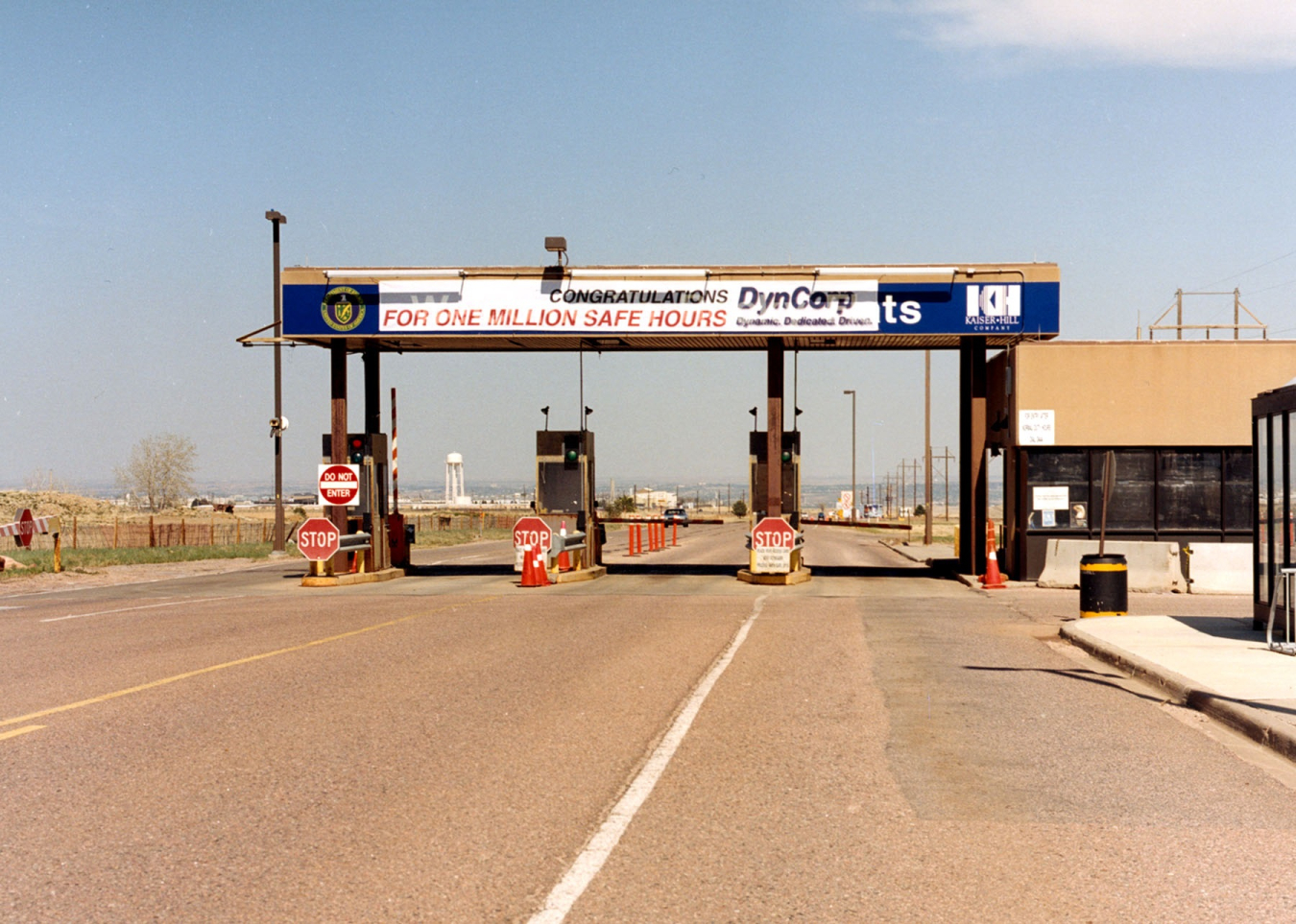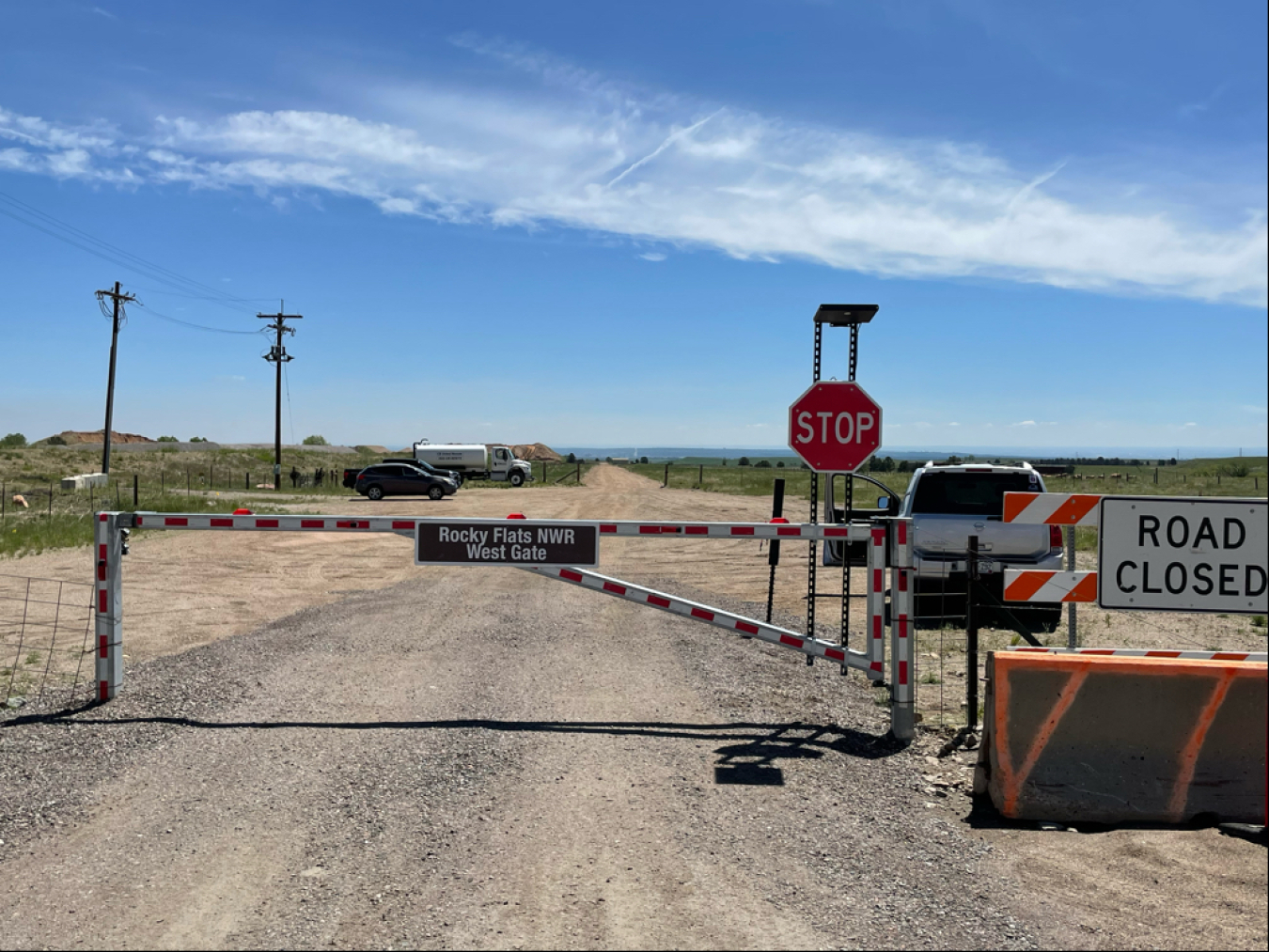Presentation and tour highlight site history and current activities
October 24, 2024A group of Japanese students and professors interested in long-term stewardship toured the U.S. Department of Energy Office of Legacy Management’s Rocky Flats Site in Colorado in September. Participants came from the University of Tsukuba, Tohoku University, Saitama University, Kyoto University, Shinshu University, and Tokyo Institute of Technology.
The site team gave a presentation and led a tour that provided the group with information on site history, cleanup, and long-term surveillance and maintenance. The visitors also had the opportunity to ask Rocky Flats Site staff questions and engage in discussions related to their areas of interest.
LM Rocky Flats Site Deputy Site Manager Michelle Franke welcomed the group to the LM Operations Center in Westminster, Colorado, and presented information about the mission of the Office of Legacy Management. LM Strategic Partners (LMSP) Rocky Flats Site Groundwater Lead John Boylan provided information on history, remediation, end-use strategies, and ongoing monitoring at the site.
The group started their tour at the former West Gate, which served as a point of entry to the Rocky Flats Plant. The left photo is the West Gate during production at the Rocky Flats Plant in May 2002. The right photo is the West Gate currently.


After the presentation, the group drove to the Rocky Flats Site to see the rolling hills and grassland that were previously a small city. Boylan, who has worked at the site for more than 30 years, shared historical insights and described the long-term monitoring and surveillance that takes place at the site today.
The tour started at the site’s former West Gate, which Boylan said was once monitored by guards. It served as an entry checkpoint for workers and guests to the Rocky Flats Plant, which operated between 1952 and 1994. Boylan shared an aerial photo of the former buildings and infrastructure.
The group traveled along what used to be the plant’s Central Avenue, and Boylan described how waste from the plant was transported during cleanup and how some structures were left underground.
While driving on-site, the students and educators saw hundreds of elk running and bugling on a hillside in the midst of their rut.
The group viewed the Solar Ponds Plume Treatment System from afar, and Boylan explained how the system treats nitrogen and uranium from the former Solar Evaporation Ponds. Construction is currently taking place to build a new uranium treatment component.
LMSP Rocky Flats Site Ecologist Karin McShea told the group about the revegetation process after the buildings were removed. The focus was to revegetate with native grass species, which also support the site’s wildlife. Noxious weeds are treated using a variety of techniques, including herbicides and biological controls that only impact the weeds.
The group saw part of the site’s long-term monitoring network at a stop at the Walnut Creek Point of Compliance (WALPOC). The Rocky Flats Site Points of Compliance (POCs) monitor surface water for specific contaminants before the water travels off-site. WALPOC monitors for plutonium, americium, uranium, and nitrate. LMSP Rocky Flats Site Surface Water Lead George Squibb described the layered monitoring system at the site. POCs are downstream from Points of Evaluation (POEs), which are closer to the former industrial areas. POEs are early indicators for contaminant exceedances because they are upstream of the POCs.
Water quantity also affects the concentration of contaminants. For example, when there is less direct runoff, the stream flow contains a higher proportion of groundwater from seepage, so it may contain higher concentrations of contaminants associated with groundwater, like uranium and nitrate. Squibb explained that there are secondary automated samplers at selected locations to ensure water sampling continues if the primary sampler fills during high flow periods, such as during significant floods.
Boylan showed the group the location of the former 903 Pad at the final stop of the tour. He explained how the 903 Pad stored drums from the Rocky Flats Plant that contained volatile organic compounds and radioactively contaminated oils that leaked. Remedial action was taken to clean up the soil as directed by the 1996 Rocky Flats Cleanup Agreement.
“We enjoyed meeting all the students and educators and providing them with insights from Rocky Flats that will hopefully support their studies and future careers,” said Franke.

